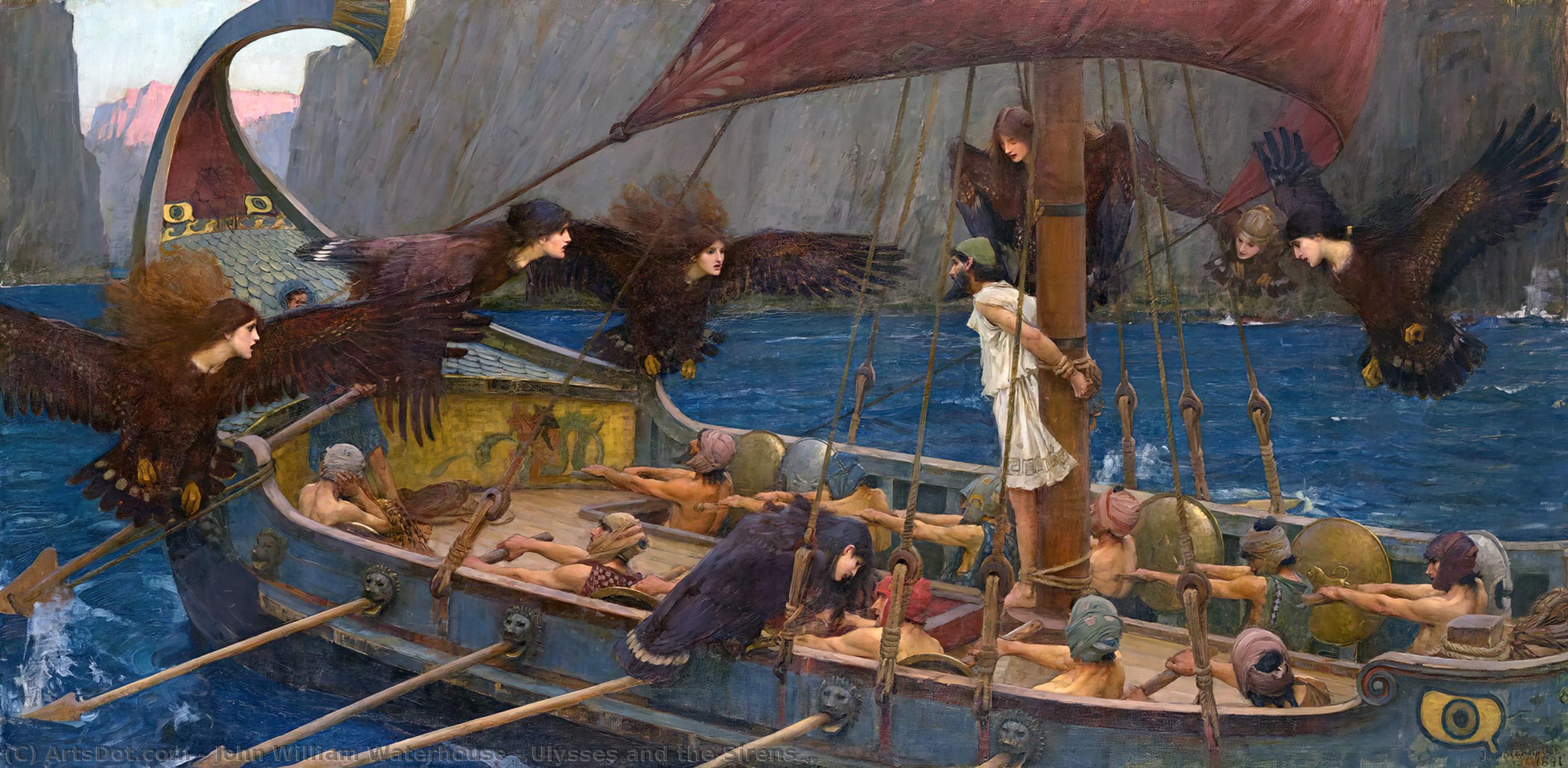Artysta: John William Waterhouse
Styl: Romanticism
Data: 1891
Rozmiar: 201 x 100 cm
Muzeum: National Gallery of Victoria (Melbourne, Australia)
Technika: Oil On Canvas
Ulysses and the Sirens (1891) is an oil painting by the English Pre-Raphaelite painter John William Waterhouse. A siren in Greek mythology was a creature half bird and half woman who lured sailors to destruction by the sweetness of her song. According to Homer there were two Sirens on an island in the western sea between Aeaea and the rocks of Scylla. Later the number was usually increased to three, and they were located on the west coast of Italy, near Naples. They were variously said to be the daughters of the sea god Phorcys or of the river god Achelous. The Greek hero Odysseus (English: Ulysses), advised by the sorceress Circe, escaped the danger of their song by stopping the ears of his crew with wax so that they were deaf to the Sirens; yet he was able to hear the music and had himself tied to the mast so that he could not steer the ship out of course. Another story relates that when the Argonauts sailed that way, Orpheus sang so divinely that none of them listened to the Sirens. In later legend, after one or other of these failures the Sirens committed suicide. In art they appeared first as birds with the heads of women, later as women, sometimes winged, with bird legs. The Sirens seem to have evolved from a primitive tale of the perils of early exploration combined with an Oriental image of a bird-woman. Anthropologists explain the Oriental image as a soul-bird--i.e., a winged ghost that stole the living to share its fate. In that respect the Sirens had affinities with the Harpies.
Artysta |
|
|---|---|
Pobieranie |
|
Uprawnienia |
Darmowy do użytku niekomercyjnego. Patrz poniżej. |
John William Waterhouse – Najczęściej oglądane dzieła
|
This image (or other media file) is in the public domain because its copyright has expired. However - you may not use this image for commercial purposes and you may not alter the image or remove the watermark. This applies to the United States, Canada, the European Union and those countries with a copyright term of life of the author plus 70 years.
|















 Note that a few countries have copyright terms longer than 70 years: Mexico has 100 years, Colombia has 80 years, and Guatemala and Samoa have 75 years. This image may
not be in the public domain in these countries, which moreover do not implement the
Note that a few countries have copyright terms longer than 70 years: Mexico has 100 years, Colombia has 80 years, and Guatemala and Samoa have 75 years. This image may
not be in the public domain in these countries, which moreover do not implement the